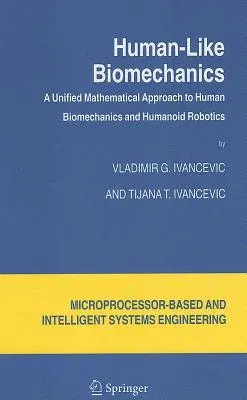Human-Like Biomechanics is a comprehensive introduction into modern
geometrical methods to be used as a unified research approach in two
apparently separate and rapidly growing fields: mathematical
biomechanics and humanoid robotics. The term human-like biomechanics is
used to denote this unified modelling and control approach to humanoid
robotics and mathematical biomechanics, based on theoretical mechanics,
differential geometry and topology, nonlinear dynamics and control, and
path-integral methods. From this geometry-mechanics-control modelling
perspective, "human" and "humanoid" means the same. This unified
approach enables both design of humanoid systems of immense complexity
and prediction/prevention of subtle neuro-musculo-skeletal injuries.
This approach has been realized in the form of the world-leading
human-motion simulator with 264 powered degrees of freedom, called Human
Biodynamics Engine (developed in Defence Science & Technology
Organisation, Australia).
The book contains six Chapters and an Appendix. The first Chapter is an
Introduction, giving a brief review of mathematical techniques to be
used in the text. The second Chapter develops geometrical basis of
human-like biomechanics, while the third Chapter develops its mechanical
basis, mainly from generalized Lagrangian and Hamiltonian perspective.
The fourth Chapter develops topology of human-like biomechanics, while
the fifth Chapter reviews related nonlinear control techniques. The
sixth Chapter develops covariant biophysics of electro-muscular
stimulation. The Appendix consists of two parts: classical muscular
mechanics and modern path integral methods, which are both used
frequently in the main text. The whole book is based on the authors' own
research papers in human-like biomechanics.

